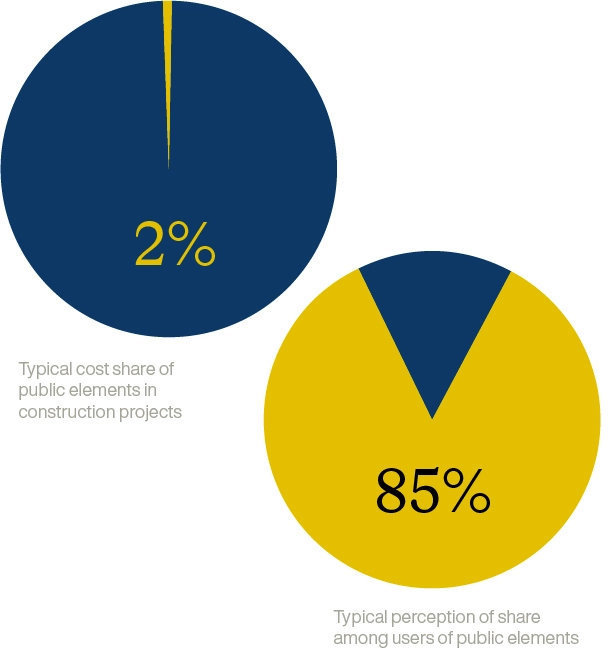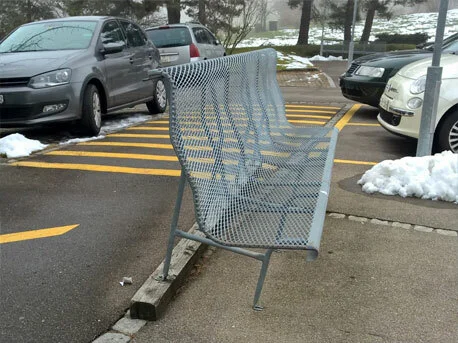It all depends on the service life
As with any scarce and high-value asset, the maintenance and upkeep of public spaces costs a lot of money. These costs are usually justified. We all know that when you buy something beautiful, you want it to give you pleasure for as long as possible and keep it in good condition. Consequently, it is not only the investment costs that need to be considered when making design and furnishing decisions, but much more the life cycle costs.
It is therefore only logical to focus on high quality when furnishing public spaces and to purchase high-quality furnishing elements that are easy to maintain and are characterized by clear, simple functionality and high-quality workmanship.
Public elements only account for a very small proportion of the total costs of construction projects
Time and again, visitors to cities or prestigious major events (e.g. the Olympic Games) are asked what they remember positively or negatively about the city or event they visited. In many cases, the public elements (benches, wayfinding and signaling systems, waste systems, public transport infrastructure, lighting, etc.) are at the top of the list in these surveys. If these are poorly made, poorly maintained or not present at all, visitors are left with a negative impression at best. Conversely, the same applies if the facilities create a positive overall impression. Such events or districts are viewed more favorably and positively by the public surveyed in terms of their overall impact.
Public elements therefore play an important role in terms of the overall impact of spaces or construction projects in public spaces as perceived by people.
However, the question often arises as to how much such projects should cost overall.
Many developers succumb to the temptation to cut costs on the supposedly "simple" items. In these debates about the permissible level of expenditure for project components in public spaces, cost reductions are imposed that are devastating for the overall effect. Unfortunately, one important aspect that clearly speaks against this is too often forgotten.

Cost-Perception-Ratio
BURRI calls this aspect the "cost-perception ratio". This refers to the relationship between the costs of the important, identification-creating furnishings (public elements) in the public space and their perception (their perceived impact).
It is often the case that these public elements only account for a negligible proportion of the total costs of a project in a public space (1%), but are usually - as described at the beginning - responsible for the majority of the perceived atmosphere and identity of a space (>85%). This has been demonstrably investigated in various projects and described several times in the specialist literature.
Saving in the wrong place directly jeopardizes the success of the project
The factor that demonstrably has the greatest and most direct influence on the positive (or negative) perception of an overall project is often the smallest cost item of the overall project.
Anyone attempting to "optimize" the already small cost share of the public elements with cost-cutting exercises runs the immediate risk of jeopardizing the positive overall impression and thus the successful use of their entire construction investment.
Although the profitability of the investment may improve in the short term, the consequences are often felt by the public as soon as the building is put into operation. The result of the project (a square, a park, etc.) is not perceived positively by the public and is consequently not used as intended. In any case, it will take revenge after the first problems caused by premature wear and tear of the "healthy" facilities and will manifest itself in high costs for retrofitting, conversion, security services, conversion concepts or similar "improvements".
However, those who consider the costs over the entire service life of the facility, recognize the importance of facilities in public spaces and consequently invest in the right place when planning and implementing a project in public spaces – i.e. in high-quality, cleverly thought-out and professionally manufactured public elements – will definitely fare better in the end.
If you try to "optimize" the 1% of the cost share of the Public Elements, you run the risk of jeopardizing the impression and thus the use of your entire building investment.
Stephan Oetiker, VRP BURRI public elements AG
